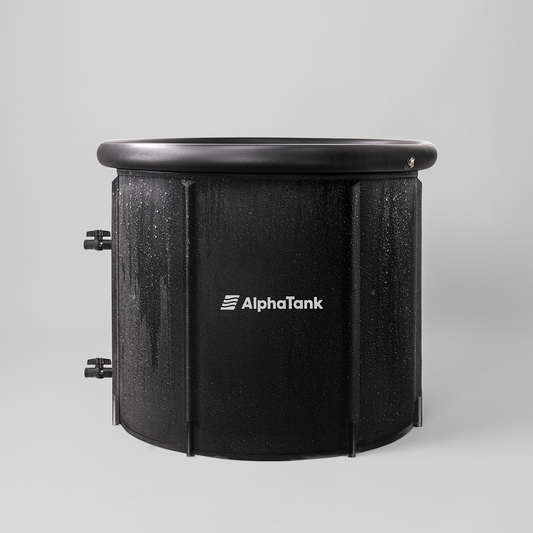Introduction
Ice baths have transitioned from being the choice of elite athletes and extreme enthusiasts to a wellness practice embraced by many. If you're new to the world of cold-water immersion therapy, don't worry—this beginner's guide will take you on a journey through the fundamentals. We'll delve into the advantages, the optimal times for these chilly endeavors, how to approach them, and essential tips for making your ice bath experience a success. Prepare to embark on a refreshing exploration of ice baths and uncover how they can elevate your overall well-being.
What Are Ice Baths?
What Are Ice Baths?
Ice baths, also often referred to as cryotherapy or whole-body cold therapy, involve immersing your body in cold water for a specific period. Typically, water temperatures range from 50°F to 59°F. This practice has gained popularity due to its potential benefits for muscle recovery, circulation, and overall well-being.
Definitions:
- Cryotherapy: Cryotherapy is a broader term that encompasses various cold therapy techniques, including ice baths. It involves exposing the body to extremely cold temperatures for therapeutic purposes.
- Whole-body cold therapy: Whole-body cold therapy is a type of cryotherapy that exposes the entire body to cold temperatures. Ice baths and whole-body cryotherapy chambers are common methods of whole-body cold therapy. This approach aims to provide the benefits of cold exposure to the entire body simultaneously.
- Cold-water immersion: Cold-water immersion is a specific form of cryotherapy & whole-body cold therapy that involves immersing the body in cold water, typically with temperatures ranging from 50°F (10°C) to 59°F (15°C). It is the term we’ll use interchangeably with ice bathing.
Benefits of Ice Baths
Before you dip your toes into icy waters, let's explore why you might want to give ice baths a try:
1. Muscle Recovery
Ice baths are renowned for their ability to accelerate muscle recovery. After an intense workout or physical activity, immersing yourself in cold water can reduce muscle soreness, inflammation, and swelling.
2. Enhanced Athletic Performance
If you're an athlete or fitness enthusiast, ice baths can help you push your limits. By promoting faster recovery, you can train harder and more frequently, leading to improved performance.
3. Improved Circulation
Cold exposure triggers a unique response in your body, constricting and then dilating blood vessels. This process can help flush out waste products from your muscles, promoting better circulation and overall health.
4. Mood and Stress Relief
Ice baths are not just for physical recovery; they can also benefit your mental well-being. The shock of cold water can release endorphins, the body's natural mood enhancers, reducing stress and anxiety.
5. Immune System Boost
While not a replacement for a healthy lifestyle, regular cold exposure may support immune system function, helping you stay healthier overall.
When to Take the Plunge
The timing of your ice bath sessions can significantly impact their effectiveness. Based on research and insights from various studies, and sources like Andrew Huberman, here are some optimal times to consider:
1. In the Morning: An Invigorating Start
Start your day with an ice bath as a refreshing alternative to a traditional morning shower. This practice can help wake you up, boost alertness, and increase your overall energy and focus levels. It's a proactive way to kickstart your day with a burst of vitality.
2. Pre-Exercise or Post-Exercise: Optimize Your Performance
For athletes and individuals engaging in intense physical activities, strategically time your ice bath either before your workout or 4-6 hours after your exercise session. Pre-exercise ice baths can help prepare your body for the upcoming physical demands, while post-exercise sessions may aid in faster recovery and improved performance.
3. After a Stressful Day: Unwind and Relax
Even if you're not an athlete, ice baths can be a valuable tool for stress relief. Consider taking an ice bath after a particularly demanding or stressful day. Cold exposure has been shown to release mood-enhancing endorphins and reduce stress and anxiety. It can be an effective way to unwind, clear your mind, and promote relaxation.
Remember that the timing of your ice baths should align with your goals and comfort level. Whether you're seeking to enhance physical performance, manage stress, or boost morning alertness, adjusting the timing of your cold exposure sessions can maximize their benefits.
How to Take an Ice Bath: A Step-by-Step Guide
Now that you understand the benefits and when to take the plunge, let's walk through the process of actually doing an ice bath. Here's a step-by-step guide for beginners:
1. Gather Your Supplies:
You'll need a few essentials:
- Bags of ice or ice packs to chill the water. Alternatively, consider a water chiller that will keep the water consistently cold and clean.
- A thermometer to monitor water temperature. Included with our ice baths.
- A timer or watch to track your immersion time.
2. Fill the Tub:
Fill your ice pod. Aim to achieve the desired temperature, ideally between 50°F (10°C) and 59°F (15°C) over time.
3. Prepare Your Breathing:
Breathing techniques can help you manage the shock of cold water. Try the following:
- Inhale deeply through your nose for a count of 4.
- Hold your breath for a count of 4.
- Exhale slowly through your mouth for a count of 8.
Repeat this cycle throughout your ice bath to stay calm and composed.
4. Submerge Yourself:
Carefully enter the tub or container, ensuring that your body is fully immersed. Start with shorter sessions, around 2-5 minutes, if you're new to ice baths.
5. Monitor Your Time:
Use a timer or watch to track your immersion time. Gradually increase the duration as your body becomes accustomed to the cold, aiming for 10-15 minutes.
6. Listen to Your Body:
Throughout the ice bath, pay attention to how you feel. It's normal to experience shivering and numbness, but if you ever feel extremely uncomfortable or experience excessive shivering, exit the ice bath immediately.
Tips for a Successful Ice Bath Experience
Here are some additional tips to make your ice bath experience more enjoyable and effective:
1. Stay Hydrated:
Drink water before and after your ice bath to stay hydrated. Cold exposure can increase fluid loss through sweating.
2. Warm-Up Afterwards:
After your ice bath, warm up gradually. Use blankets, warm clothing, or a hot shower to elevate your body temperature.
3. Be Consistent:
To experience the full benefits of ice baths, consistency is key. Try to incorporate them into your routine regularly.
4. Combine with Other Recovery Techniques:
Ice baths work best when used in conjunction with other recovery methods like stretching and proper nutrition.
In Conclusion
Ice baths may seem intimidating at first, but with proper guidance and a gradual approach, they can become a valuable tool in your wellness toolkit. Whether you're an athlete looking to boost recovery or simply seeking stress relief and improved circulation, ice baths offer a wide range of benefits. Remember to listen to your body, stay safe, and enjoy the invigorating experience of cold-water immersion.




